Every week, another remote hire flames out.
You thought you nailed the interview. Their portfolio sparkled. References checked out.
Three months later? They’re gone.
The problem runs deeper than bad luck. Remote hiring demands a completely different playbook. One most companies haven’t written yet.
I’ve watched brilliant managers botch remote hires repeatedly. Same mistakes. Same painful outcomes. Same scramble to fill the role again.
But after analyzing hundreds of remote hiring failures (and successes), the patterns become crystal clear. Fix these critical mistakes, and your remote hires actually stick around – and thrive.
What’s Considered a Hiring Mistake?
A hiring mistake happens when someone leaves within 90 days or fails to deliver expected results within six months. Both scenarios drain resources and morale.
Remote hiring mistakes carry unique signatures:
- Ghost employees who vanish after onboarding
- Time zone disasters requiring 3 AM meetings
- Culture crashers who derail team dynamics
- Security risks who expose company data
- Performance pretenders who interview well but deliver nothing
- Communication black holes who disappear for days
The subtle mistakes hurt most. The developer who technically functions but never collaborates. The marketer who hits deadlines but misses quality standards.
These slow bleeds often go unnoticed until damage compounds.
How Costly Can Be Hiring Mistakes?
According to SHRM, replacing a remote employee costs up to 200% of their annual salary, significantly higher than the 50-60% for traditional roles. The numbers compound fast.
A $75,000 remote developer who leaves after six months actually costs you $150,000 minimum.
Factor in recruitment fees, onboarding hours, productivity ramp-up, knowledge transfer, and project delays. Remote positions sometimes take longer to fill than office roles. Teams operate short-staffed for months.
Remaining employees absorb extra work, burning out your best people. One bad hire can trigger cascade departures. I’ve seen entire remote teams implode after a toxic hire poisoned the culture.
Prevention beats cure every time.
1. Vague Roles and Expectations
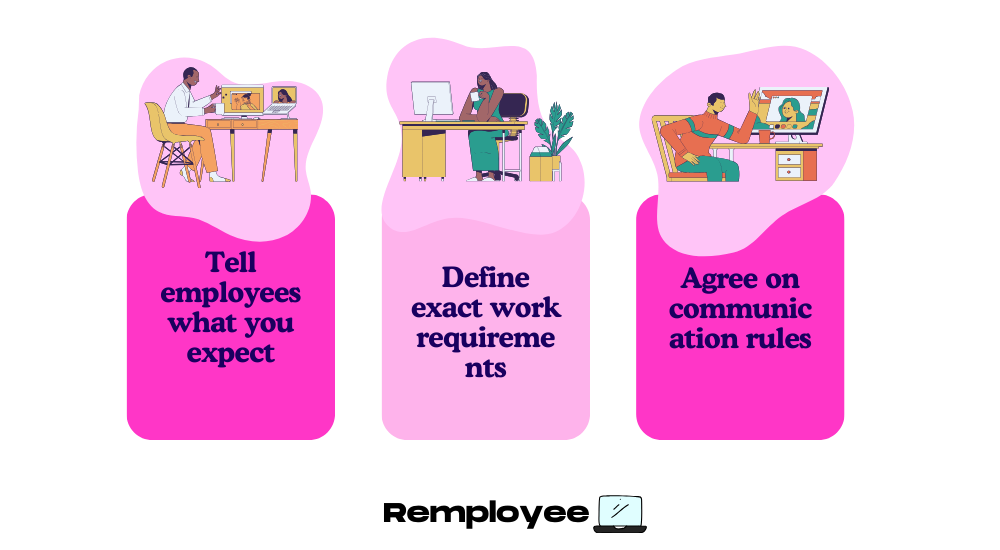
Remote employees need crystal-clear boundaries. Yet most job descriptions read like wish lists written at 2 AM after three espressos.
You want a “self-starter who wears many hats.”
They hear “figure everything out yourself while doing five jobs.”
The disconnect kills momentum before day one. Define exact deliverables, communication protocols, and success metrics. Spell out response times, meeting schedules, and documentation requirements.
My worst remote hire lasted two weeks—brilliant developer, but we never clarified async work expectations. He expected daily standups; we expected weekly check-ins. Neither of us was wrong. We simply never had the conversation. Specificity saves everyone’s sanity.
2. Ignoring Time Zone Overlap
Four hours of overlap sounds reasonable until you’re scheduling your fifth 6 AM call this week. Companies hire globally then wonder why collaboration feels impossible.
The math matters more than you think.
Minimum overlap requirements:
- Real-time collaboration roles: 4-6 hours
- Independent contributors: 2-3 hours
- Leadership positions: 5-7 hours
- Customer-facing roles: Full coverage needed
- Technical support: Follow-the-sun model
Calculate overlap before posting the role. Map critical meetings against candidate locations. Some roles thrive asynchronously; others die without real-time connection.
Know the difference before extending offers.
3. Skipping Paid Trial Projects
Trial projects reveal everything interviews hide. Pay market rate for 10-20 hours of actual work. Watch how they handle feedback, manage time, and communicate blockers.
One candidate aced our interviews then disappeared for three days during the trial.
Bullet dodged.
4. One-Size-Fits-All Interviews
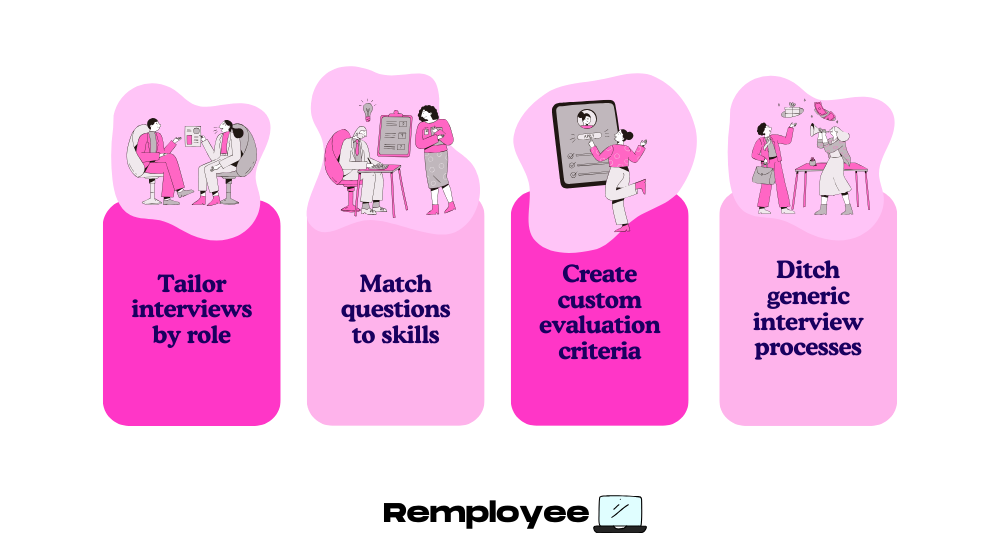
Engineers need different assessments than marketers. Yet companies run identical interview loops for every role. Remote work amplifies role-specific needs.
Tailor your process or watch great candidates slip away. Technical roles need live coding sessions and architecture discussions. Creative positions require portfolio deep-dives and collaborative exercises. Operations candidates should walk through process improvements.
I learned this after losing three exceptional designers who bombed our generic “culture fit” interviews. They could’ve transformed our product, but we asked the wrong questions.
Now each role gets custom evaluation criteria. Success rates doubled within three months.
Generic interviews generate generic hires.
5. Neglecting Asynchronous Communication Skills
According to Gitlab, 87% of remote workers spend most workdays in async communication, yet only 34% of companies test for these skills during hiring. The gap explains countless failed hires.
Strong async communicators document decisions, provide context upfront, and close loops without prompting. They write clear briefs, record Loom videos for complex topics, and update project boards religiously.
Test these skills during interviews.
Send candidates questions via email. Evaluate their written responses for clarity and completeness. Ask them to document a process or explain a technical concept asynchronously. The best remote workers over-communicate naturally.
The rest leave teammates guessing.
6. Overlooking Culture Add, Not Fit
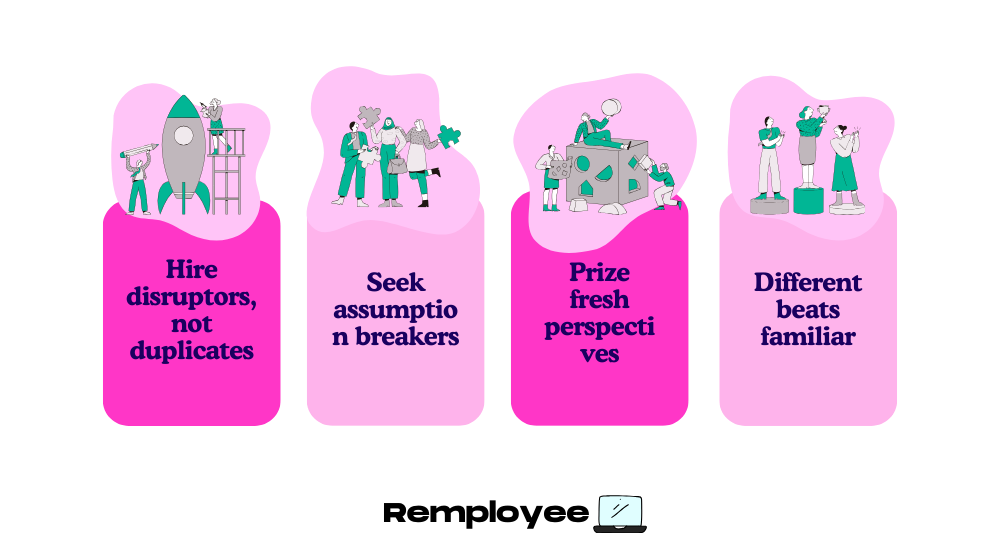
“Culture fit” builds echo chambers. Remote teams need diverse perspectives more than office clones. Shift your focus from fitting in to adding value.
What fresh viewpoint does this person bring?
How do they challenge existing assumptions?
Which blindspots might they illuminate?
Culture add means hiring the introvert who documents everything when your team skews verbal.
Or bringing in someone from a different industry who questions “how we’ve always done things.” My best remote hire came from hospitality, not tech.
She revolutionized our customer communication because she saw problems we’d normalized.
Stop hiring mirrors.
Start hiring windows.
7. No Structured Onboarding Plan
Remote onboarding requires 3x more structure than in-person. Every assumption needs documentation. Every connection needs scheduling.
Build the roadmap before they start.
8. Confusing Availability With Productivity
Green Slack dots mean nothing. Output means everything. Managers track online status then wonder why remote workers burn out. The always-available employee rarely delivers the best work. They’re performing presence, not producing results, which often leads to remote work fatigue.
Measure deliverables, project completion rates, and quality metrics. Ignore response times unless they’re client-facing. The developer who codes four focused hours daily outperforms the one who spreads mediocre work across twelve distracted hours.
Set output expectations, not hour requirements. My team member in Poland works 6 AM to 2 PM her time. She ships more features than anyone.
Meanwhile, the guy who’s “always online” hasn’t closed a project in months.
Presence theater kills productivity.
9. Rushing Offers Without References
Reference checks take time. Remote hiring compounds the urgency. You need someone yesterday, and this candidate seems perfect. So you skip the calls.
Three months later, you discover why their last three companies let them go.
Remote work hides performance issues longer than office work. No casual observations. No hallway conversations. By the time problems surface, damage spreads deep.
I rushed once—hired a marketing lead without checking references because we desperately needed Black Friday campaigns. Turned out he’d been fired twice for missing major deadlines. Cost us $200K in lost revenue.
Now every hire gets three reference calls minimum.
No exceptions.
10. Underinvesting in Security and Compliance
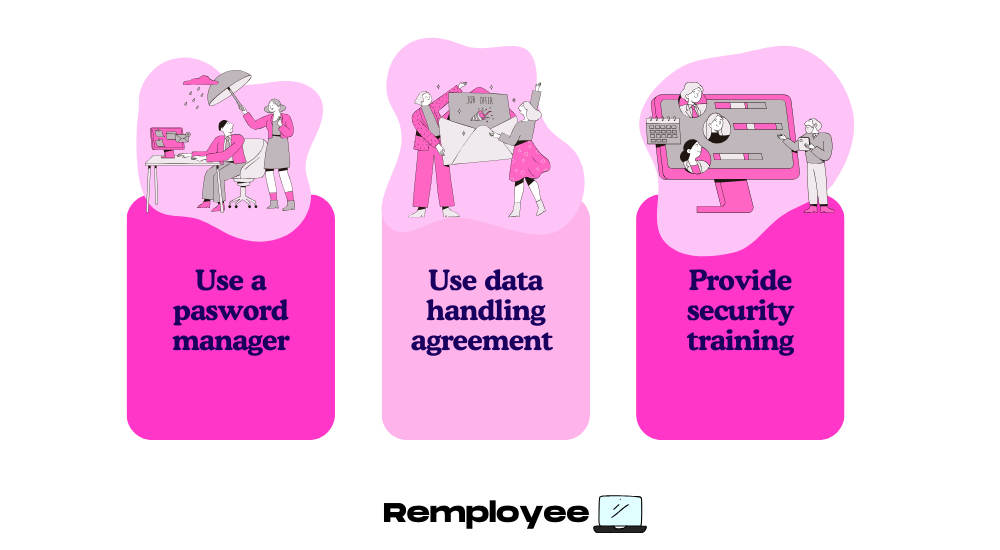
Essential security requirements for remote hires:
- Password manager mandatory (1Password, Bitwarden)
- 2FA on all company accounts
- VPN for sensitive data access
- Encrypted hard drives
- Separate work devices when possible
- Security training within week one
- Signed data handling agreements
Remote workers access company data from coffee shops, co-working spaces, home networks. Each connection point creates vulnerability. Budget for security tools upfront.
Include requirements in offer letters. Train during onboarding.
The cleanup from one data breach costs more than years of prevention tools.
11. Ignoring Equipment, Stipends, and Setup
A Stanford study found remote workers with proper home office setups show 13% higher performance than those without. Yet companies expect remote employees to figure everything out themselves.
Forward-thinking companies consider it an essential employer responsibility to equip employees with proper home office arrangements.
Broken laptops, terrible internet, kitchen table desks – productivity killers hiding behind closed doors. Provide equipment stipends upfront.
Set minimum standards for internet speed, desk setup, and hardware specs. Include monthly allowances for co-working spaces or coffee shops.
My company started offering $1,500 setup stipends plus $100 monthly workspace budgets. Productivity jumped 20% within two months.
Turnover dropped by half.
Small investment, massive returns.
12. Overreliance on Gut Feel
Hiring managers love their instincts. “Great energy” and “good vibes” become decision drivers. Remote hiring magnifies these biases because you’re judging through screens.
Video calls hide body language. Technical glitches become personality flaws. Structured scorecards beat gut feelings every time. Rate specific competencies. Document observable behaviors.
Compare candidates against rubrics, not feelings. Tool recommendation: Metaview.ai records and analyzes interviews, highlighting objective patterns you’d miss. It caught my tendency to favor extroverted candidates even for heads-down coding roles.
Data exposed the bias.
Now introverted developers thrive on our team because we evaluate skills, not sparkle.
13. Not Testing Written Communication
Remote workers write constantly. Test this skill explicitly. Send scenarios requiring written responses. Time doesn’t matter; clarity does.
The strongest remote employees write like they’re explaining to strangers.
14. Forgetting Country-Specific Compliance
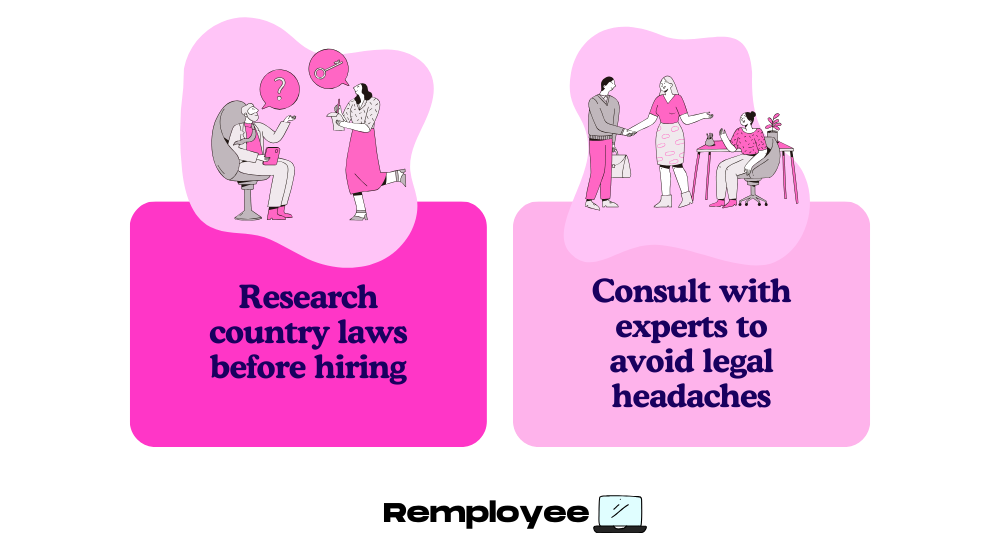
Hiring from Canada? Different tax forms. Brazil? Mandatory 13th-month salary. Each country brings unique remote work taxes and requirements. Miss one detail and face penalties, lawsuits, or blocked payments.
Employment laws vary WILDLY.
Contractor classifications differ. Benefits requirements change. IP ownership gets complex. Partner with an Employer of Record (EOR) service like Deel or Remote for complicated jurisdictions.
They handle compliance while you focus on talent. I tried managing international compliance solo once. Spent three months untangling Portuguese employment law after hiring from Lisbon.
The EOR fees suddenly looked cheap compared to legal headaches.
Know the rules or pay someone who does.
15. Limiting Diversity Through Location Bias
McKinsey research shows companies with diverse remote teams are 35% more likely to outperform their competitors financially. Yet most companies hire from the same three cities, speak only English, and recruit from identical backgrounds.
Remote work eliminates geographic barriers – why rebuild them?
You’re competing globally but hiring locally.
The developer in Nigeria brings different problem-solving approaches than your Bay Area team. The designer in Vietnam sees UI patterns you’ve never considered. The marketer in South Africa understands emerging markets your competitors ignore.
Expand beyond comfortable recruiting zones, and build an inclusive and diverse workspace. Use platforms like RemoteWoman or PowerToFly for underrepresented talent. Translate job posts.
Accept applications in multiple languages.
Different perspectives create better products.
16. Hiring for Hours, Not Outcomes
Nine-to-five makes zero sense across time zones. Yet managers still count hours instead of measuring output. Remote work thrives on outcome-based expectations. Define what success looks like, not when it happens.
Set project milestones, quality standards, and deadline commitments. Let workers manage their own time. The parent who codes after bedtime delivers exceptional work. The digital nomad working from Bali ships features faster than your local team.
My best customer success manager works split shifts around her kids’ schedules. Response times stay under two hours. Customer satisfaction hits 98%.
Hours logged?
Who cares. Results matter.
Everything else is theater.
Wrap Up
Remote hiring breaks every traditional playbook you know. The mistakes compound silently. Each misstep costs more than money – it costs momentum, morale, and months of rebuilding.
But flip these failures into frameworks, and something shifts. Your hit rate climbs. Great people stick around. Teams actually gel across continents.
Start small. Fix your job descriptions. Add trial projects. Test writing skills. Build onboarding that assumes nothing.
The companies winning at remote work stopped guessing three years ago.
They built systems. They measured outcomes.
They learned from every failure.
Your next remote hire could transform everything – if you stop making the same preventable mistakes.
After years of freelancing through broken systems and vague job boards, Josie built Remployee to help others find what she couldn’t at first: flexible work that feels like freedom, not chaos. She believes real jobs should fit real lives—and that thoughtful writing can be a bridge to better work. If you’re looking for permission to choose differently, Josie’s already given it.



